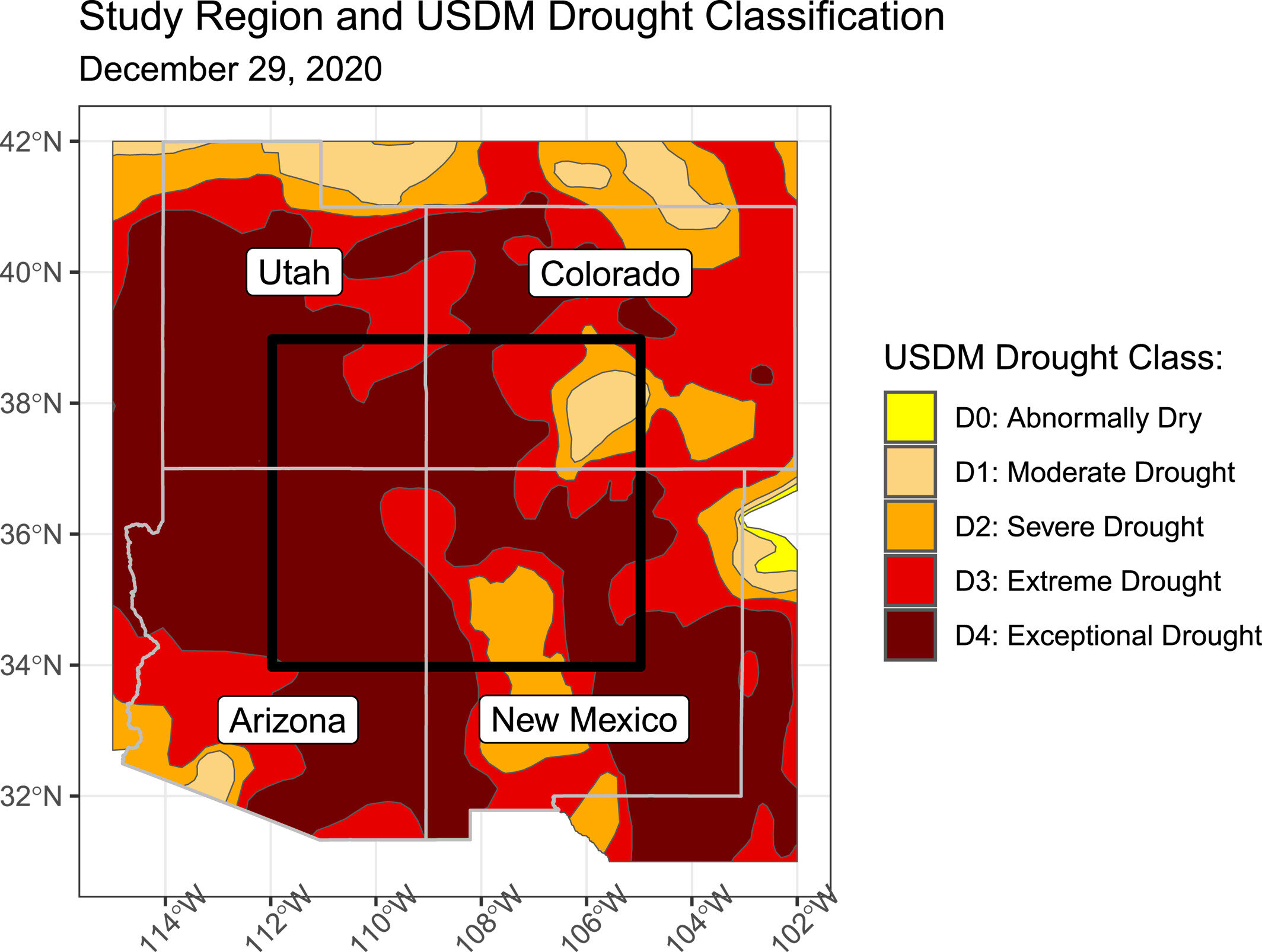The American Southwest has always been a dry place—cue romantic visions of hot, rugged, sun-bleached, seemingly infinite landscapes and star-filled night skies. And yet, the plants, animals and people of the Four Corners region (Utah, Colorado, New Mexico and Arizona) have managed to adapt to and even flourish in the land of low rainfall and high temperatures.
However, the rising temperatures brought on by human-driven atmospheric warming are bringing big changes to agricultural life in the Southwest. According to a recent paper by researchers at UC Santa Barbara and UC Merced, “increased temperatures from human-caused climate change are having persistent and damaging impacts on vegetation productivity, with significant implications for ranchers and other land users in the region.”
“There are climate extremes that are tied to too much rainfall or too little rainfall,” said UCSB climate scientist Chris Funk, co-author of a research article that appears in Earth’s Future. “What this work has really focused on is a different and equally dangerous type of climate change that is associated with the desiccation of plants by extreme temperatures.”
On top of a two-decade ongoing megadrought, the researchers found that rising average air temperatures have exacerbated the dryness and other conditions that increase evaporation from leaves. The result? A decrease in vegetation to support life on the range.
The ability of air to hold water (as vapor) is central to their findings, according to Funk, who leads the Climate Hazards Center at UCSB.
2023-12-12 04:00:04
Article from phys.org rnrn
